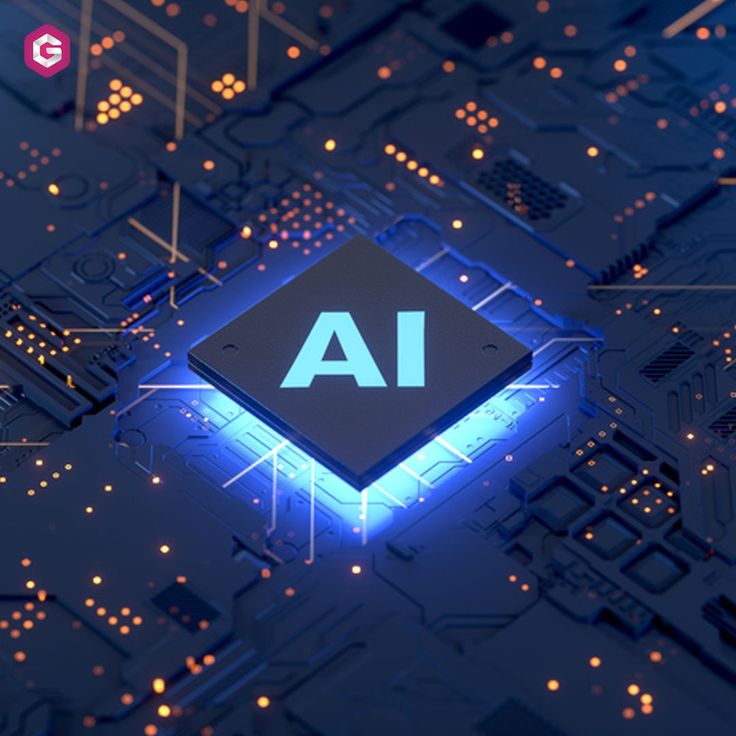Facial recognition technology has become increasingly prevalent in various applications, from security systems to user authentication. This article explores the intricacies of implementing facial recognition using computer vision models, detailing the techniques, processes, and considerations involved.
1. Introduction
Facial recognition is a biometric technology that identifies or verifies a person by analyzing and comparing facial features. Its importance has surged in recent years, finding applications in security, surveillance, personal device unlocking, and even social media tagging. This article provides an overview of how computer vision models are employed to achieve effective facial recognition.
2. Understanding Facial Recognition
How Facial Recognition Works: The facial recognition process typically involves several key steps:
- Detection: Locating faces within images or video frames.
- Alignment: Normalizing the detected faces for scale, rotation, and perspective.
- Feature Extraction: Identifying unique facial features, often using deep learning techniques.
- Recognition: Comparing extracted features against a database to identify or verify individuals.
Components of a Facial Recognition System:
- Cameras and Sensors: High-quality imaging devices capture the facial data.
- Algorithms and Software Frameworks: These are used to process and analyze the facial data.
- Databases: Store facial data for comparison during the recognition process.
3. Facial Recognition Techniques
Traditional Methods:
- Eigenfaces and Fisherfaces: Early techniques that utilize principal component analysis for face recognition.
- Scale-Invariant Feature Transform (SIFT) and Speeded-Up Robust Features (SURF): Algorithms that detect and describe local features in images.

Deep Learning Approaches:
- Convolutional Neural Networks (CNNs): These neural networks excel in image-related tasks and have become the backbone of modern facial recognition systems.
- FaceNet: Developed by Google, FaceNet uses deep learning to encode faces into a compact representation, making it easier to compare different faces.
- Dlib and OpenCV: These libraries offer tools and pre-trained models for building deep learning-based facial recognition systems.
4. Data Collection and Preparation
Gathering Facial Data:
Data can be sourced from publicly available datasets, such as Labeled Faces in the Wild (LFW) or CelebA, which contain thousands of labeled images.
Data Preprocessing:
- Face Detection and Alignment: Use techniques like Haar cascades or deep learning-based detectors (e.g., MTCNN) to locate and align faces in images.
- Normalization Techniques: Standardize face images by resizing and scaling pixel values.
- Data Augmentation Strategies: Techniques like rotation, flipping, and brightness adjustment can help improve model robustness by increasing dataset diversity.
5. Building a Facial Recognition Model
Choosing a Framework: Popular frameworks for building facial recognition models include TensorFlow, PyTorch, and Keras. These libraries offer extensive support for deep learning and facilitate model development.
Model Architecture:
Designing a CNN architecture suitable for facial recognition involves choosing layers (convolutional, pooling, and fully connected) and activation functions. The architecture must balance complexity and performance.
Training the Model:
- Setting Hyperparameters: Key hyperparameters include learning rate, batch size, and the number of epochs. Careful tuning can lead to better performance.
- Dataset Splitting: Divide the dataset into training, validation, and test sets to evaluate model performance effectively.
6. Evaluating Model Performance
Evaluation Metrics:
Use metrics such as accuracy, precision, recall, and F1-score to assess model performance. ROC curves and AUC can provide insights into the model’s ability to distinguish between classes.
Testing with Real-World Data:
Testing the model on diverse, real-world datasets is crucial for understanding its performance under varying conditions, such as different lighting and angles.

7. Deployment of Facial Recognition System
Integration with Applications:
Facial recognition can be integrated into various applications, including security systems, mobile devices, and customer verification systems.
Real-time Processing:
Enabling real-time facial recognition requires optimizing algorithms for speed and efficiency. Hardware considerations, such as GPUs, can significantly impact performance.
Privacy and Ethical Considerations:
Addressing privacy concerns is vital. Implementing data protection measures and obtaining consent for facial data usage are essential to mitigate ethical issues.
8. Challenges in Facial Recognition
Variability in Faces:
Factors such as lighting changes, different poses, and facial expressions can complicate recognition accuracy. Robust models must be trained to handle these variations.
Bias and Fairness:
Bias in facial recognition systems can arise from unrepresentative training datasets. Ensuring diversity in training data is critical to avoid biased outcomes.
9. Future Trends in Facial Recognition
The field of facial recognition continues to evolve, with advances in algorithms and technologies. Emerging trends include:
- Improved accuracy through AI-driven models.
- Applications in law enforcement, retail, and healthcare.
- Enhanced privacy measures and ethical frameworks to govern facial recognition use.
10. Conclusion
Facial recognition technology represents a significant advancement in computer vision. By understanding the implementation process, techniques, and considerations involved, developers can harness its potential for various applications while addressing ethical concerns. As technology evolves, the possibilities for facial recognition systems will continue to expand.
11. References
For further reading and exploration of facial recognition and computer vision models, consider the following resources:
- Research papers on facial recognition methodologies.
- Online courses focused on computer vision and deep learning.
- Tutorials and documentation for frameworks like TensorFlow and PyTorch.
FAQs: Implementing Facial Recognition with Computer Vision Models
1. What is facial recognition, and how does it work?
Facial recognition is a biometric technology that identifies or verifies a person by analyzing and comparing facial features. It works by detecting a face in an image, aligning it, extracting unique features, and then comparing those features to a database of known faces.
2. What are the main techniques used in facial recognition?
Facial recognition techniques include traditional methods like Eigenfaces and Fisherfaces, as well as deep learning approaches using Convolutional Neural Networks (CNNs) and specialized models like FaceNet. Deep learning methods generally offer higher accuracy and robustness compared to traditional techniques.
3. What datasets can be used for training facial recognition models?
Common datasets for training include:
- Labeled Faces in the Wild (LFW): Contains over 13,000 labeled images of faces.
- CelebA: Features over 200,000 celebrity images with various attributes.
- VGGFace2: A large dataset of images for face recognition research.

4. What are some common challenges faced in facial recognition?
Challenges include variability in facial appearances due to lighting, angles, and expressions. Other issues are biases in training datasets, leading to inaccuracies in recognition, especially for underrepresented groups.
5. How can I ensure the ethical use of facial recognition technology?
To ensure ethical use, consider the following:
- Obtain informed consent from individuals whose data will be used.
- Implement strong data protection measures to secure facial data.
- Regularly audit the system for bias and fairness.
6. What are some popular frameworks for building facial recognition systems?
Popular frameworks include:
- TensorFlow: Offers extensive support for building deep learning models.
- PyTorch: Known for its dynamic computation graph, making it easy to experiment.
- Keras: A high-level API for building and training deep learning models easily.
7. How can I evaluate the performance of my facial recognition model?
You can evaluate model performance using metrics such as accuracy, precision, recall, F1-score, and AUC-ROC curves. It’s essential to test the model with diverse datasets to understand its effectiveness in real-world scenarios.
8. What are some practical applications of facial recognition technology?
Facial recognition technology is used in various applications, including:
- Security systems for surveillance and access control.
- Mobile device unlocking and authentication.
- User tagging in social media platforms.
- Customer verification in retail settings.
Tips for Implementing Facial Recognition Systems
- Start with Quality Data: Ensure that you collect high-quality, diverse datasets for training your model. A well-curated dataset is critical for achieving high accuracy.
- Preprocess Your Data: Spend time on preprocessing steps like face detection, alignment, and normalization. Properly preprocessed data can significantly enhance model performance.
- Choose the Right Model: Experiment with different architectures and pre-trained models to find the best fit for your specific use case. Consider using models that have demonstrated success in similar applications.
- Optimize for Real-Time Performance: If your application requires real-time facial recognition, optimize your model for speed. Techniques such as model pruning and quantization can help reduce computational load.
- Regularly Update Your Model: As new data becomes available, periodically retrain your model to maintain accuracy and adapt to changing conditions.
- Monitor for Bias: Continuously evaluate your model for bias and fairness, especially if it will be used in sensitive applications. Diverse training data can help mitigate bias.
- Implement Robust Security Measures: Protect sensitive facial data through encryption and secure data storage solutions to prevent unauthorized access.
- Stay Informed on Ethical Practices: Keep abreast of the latest discussions around ethical AI practices and regulations surrounding facial recognition technology.
- Engage with the Community: Participate in forums, webinars, and workshops focused on computer vision and facial recognition. Engaging with others in the field can provide valuable insights and tips.
- Document Your Process: Maintain detailed documentation of your development process, including model architectures, data sources, and evaluation metrics. This will aid in reproducibility and future improvements.